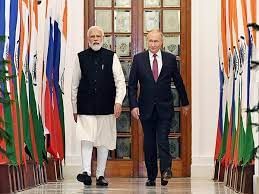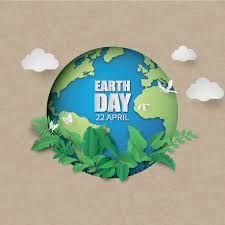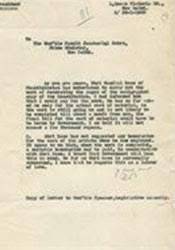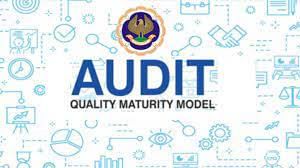UPSC Daily Current Affairs - 22nd April 2023 | Current Affairs & Hindu Analysis: Daily, Weekly & Monthly PDF Download
GS-I
What is Abhilekh Patal?
Why in News?
Recently, The Prime Minister of India praised “Abhilekh Patal” a portal with over 1 Crore Pages of Historical Records of the National Archives.
About Abhilekh Patal:
- What it is? It is a full-featured web portal to access the National Archives of India’s reference media and its digitized collections through the Internet.
- Abhilekh is a Sanskrit term used in India for records since ancient times and Patalis a Sanskrit word meaning a board, platform, or surface.
- A combination of both these words has been adopted as an acronym for Portal for Access to Archives and Learning.
Key facts about the National Archives of India
- It was established on 11 March 1891 at Calcutta (Kolkata) as the Imperial Record Department, it is the biggest archival repository in South Asia.
- It is the repository of the non-current records of the Government of India and is holding them in trust for the use of record creators and general users.
- It has a vast corpus of records viz., public records, private papers, oriental records, cartographic records and microfilms, which constitute an invaluable source of information for scholars-administrators and users of archives.
- It is Located at the heart of New Delhi
- It has one Regional Office in Bhopal and three Records Centres at Bhubaneswar, Jaipur and Puducherry.
- Nodal Ministry: It is an Attached Office of the Ministry of Culture, Government of India.
Source: PIB
GS-II
India-Russia Relations

Why in News?
Recently, the Inter-governmental Commission on Trade, Economic, Scientific, Technological and Cultural Cooperation meet was held between India and Russia.
India-Russia Relations:
Historical relationship:
- During that, Russia has mentioned the support of the Soviet Union for India’s sovereignty over the disputed territories of Kashmir and Portuguese coastal enclaves such as Goa. Even after the abrogation of Article 370 Russia still supports India’s claim over Kashmir.
- The USSR agreed to transfer technology to co-produce the Mikoyan-Gurevich MiG-21 jet fighter in India in 1962. But the USSR rejected a similar move to China.
- India signed the Indo-Soviet Treaty of Friendship and Cooperation in 1971 during the Bangladesh liberation war.
Political Relations:
- The Annual Summit meeting between the Prime Minister of India and the President of the Russian Federation is the highest institutionalized dialogue mechanism in the strategic partnership between India and Russia.
- So far 20 Annual Summit meetings have taken place alternatively in India and Russia.
Intergovernmental Commissions:
- There is regular high-level interaction between the two countries.
- The IRIGC (India-Russia Intergovernmental Commission):
- It is the main body that conducts affairs at the governmental level between both countries. Both countries are members of international bodies including the UN, BRICS, G20 and SCO.
- Two Inter-Governmental Commissions:
- One on Trade, Economic, Scientific, Technological and Cultural Cooperation (IRIGC-TEC), co-chaired by EAM and the Russian DPM, and
- Another on Military-Technical Cooperation (IRIGC- MTC) co-chaired by Russian and Indian Defence Ministers, meet annually.
Trade and Economic Relations:
- It is clear by the revised targets of increasing bilateral investment to US $ 50 billion and bilateral trade to US $ 30 billion by 2025.
- Bilateral trade during April 2020-March 2021 amounted USD 8.1 billion. Indian exports amounted USD 2.6 billion while imports from Russia amounted USD 5.48 billion.
- India Russia Intergovernmental Commission for Trade, Economic, Scientific & Cultural Cooperation (IRIGC-TEC).
- India-Russia Strategic Economic Dialogue (IRSED) has been established for cooperation in the field of development of economic policy and to encourage regular interactions and cooperation between the two countries.
- India is contemplating an FTA/ CECA with the Eurasian Economic Union.
- India is keen to engage more closely with Russia and the CIS countries to further intensify our trade and economic cooperation with this region.
- Bilateral trade in services: Bilateral trade in services has remained stable during the last 5 years with trade balance in Russia’s favour.
- While in 2017, trade in services was USD 1095.4 million, it reduced slightly in 2018 to USD 999 million. The figure stands at USD 973.645 million for the year 2020.
- Investment: Russian investment in India in 2017 has reached 18bn USD and India’s total investment in Russia so far is 13 bn USD.
- The overall investment target of 30 bn USD that was set for 2025 has been already crossed. Investment cooperation has been envisaged in some priority sectors such as hydrocarbons, power, coal, nuclear power, fertilizers, IT, mineral and metallurgy, steel, pharmaceuticals, infrastructure projects amongst others.
Defence and Security Relations:
- India-Russia military-technical cooperation has evolved from a buyer-seller framework to one involving joint research, development and production of advanced defence technologies and systems
- Joint Tri-Services Exercise ‘INDRA 2019’ between India and Russia was carried out simultaneously in Babina, Pune, and Goa in 2019.
- The joint military programmes between India and Russia include:
- BrahMos cruise missile programme
- 5th generation fighter jet programme
- Sukhoi Su-30MKI programme
- Ilyushin/HAL Tactical Transport Aircraft
- KA-226T twin-engine utility helicopters
- The military hardware purchased/leased by India from Russia includes:
- S-400 TRIUMF
- Kamov Ka-226 200 to be made in India under the Make in India initiative
- T-90S Bhishma
- INS Vikramaditya aircraft carrier programme
- S-400 air defence system
Energy Security
- In Energy sector Russia has built nuclear reactors in India (Kudankulam reactors), adopted strategic vision in nuclear energy, offered oil, gas and investment opportunities in the fuel sector of Russia e.g. Sakhalin I etc.
- Both are extending civil nuclear cooperation to 3rd countries, e.g. Bangladesh.
Science & Technology
- The Working Group on Science and Technology, the Integrated Long Term Programme (ILTP) and the Basic Science Cooperation Programme are the three main institutional mechanisms for bilateral Science and Technology cooperation.
- Science Academies of the two countries promote inter-academy exchanges.
Space Exploration:
- Both sides cooperate in the peaceful uses of outer space, including satellite launches, GLONASS navigation system, remote sensing and other societal applications of outer space.
- An MoU ISRO and ROSCOSMOS on Joint Activities in the field of Human Spaceflight Programme was signed during the 19th Bilateral Summit.
Significance of relationship for India:
- Balancing China:
- Russia organised a trilateral meeting among the foreign ministers of Russia, India and China following deadly clashes in Galwan valley.
- This shows that Russia can contribute in defusing tensions with China whose relations with India have come to an inflection point.
- Emerging New Sectors of Economic Engagement:
- mining, agro-industrial, and high technology, including robotics, nanotech, and biotech.
- India’s footprint in the Russian Far East and in the Arctic is set to expand.
- Connectivity projects may get a boost too.
- Combating Terrorism:
- India and Russia are working on Afghanistan.
- Similarly, both are calling for early formalisation of Comprehensive Convention on International terrorism.
- Support At Multilateral Forums:
- Russia has been a long standing supporter of India’s membership of the Nuclear Suppliers Group and Permanent Membership in an expanded UNSC.
Way Forward:
It is in the vital interest of both countries to ensure that the area which relates to the security and defence, civil nuclear energy and space among, is insulated from mutual differences in outlook on some geo-political issues and the pressures of other powers.
India-Russia economic relations carry a lot of potential, but they need to be scaled up. Finding a new logic for the ‘special relationship’ remains a task in progress, and the leadership on both sides should pursue this with energy and enthusiasm.
Source: The Hindu
State of World Population (SOWP)
Why in News?
The United Nations Population Fund (UNFPA) has recently released its report- State of World Population (SOWP).
Key highlights of the report:
- The population of the world is 8,045 million.
- The largest share in population has age between 15- 64 years (65%), followed by the 10-24 years (24%) and above 65 years of age (10 %).
- China and India accounts for the largest populations in Asia, with more than 1.4 billion each in 2022.
- India is now the most populous country in the world, outstripping China’s population.
- The rate of global population growth has fallen and is less than 1 % since 2020.
India’s demography:
Age group:
- 68% belongs to the 15-64 years and 26% belongs to the 10-24 years.
- Result: India is one of the youngest countries in the world with 50% of its population below the age of 25.
- The fertility rate in India has been steadily dropping and is lower than 2.1 children per woman.
- Reason of decline: use of contraceptive methods, spacing of pregnancies, access to health care, impetus to family planning, increasing wealth and education.
- Life expectancy for men is 71 years, while it is lower for women at 74 years.
Key projections:
- The global population could grow to around 8.5 billion in 2030, 9.7 billion in 2050 and 10.4 billion in 2100.
- Maximum increase till 2050 will be concentrated in: the Democratic Republic of the Congo, Egypt, Ethiopia, India, Nigeria, Pakistan, the Philippines and the United Republic of Tanzania.
- If India’s population continues to grow at the current pace, it would double from the present value in the next 75 years.
Outlook for population growth
- Latest projections suggest that the rate of global population growth has fallen, and has been at less than 1 per cent since 2020.
- This is largely due to declining fertility.
- Around two thirds of people live in a country or area with a total fertility rate at or below 2.1 children per woman (also called “replacement fertility” rate or “zero-growth fertility” rate).
- In 1950 the global fertility rate stood at 5.
- Already 60% of the world’s population lives in a region where the fertility rate is below replacement level, up from 40% in 1990.
Migration as driver of growth:
- It is international migration that is now the driver of growth in many countries, with 281 million people living outside their country of birth in 2020.
- Migration has also occurred due to war, famines, and other catastrophes.
- South Asia clocks some of the highest emigration trends, with India seeing an estimated net outflow of 3.5 million between 2010 and 2021.
- Pakistan has the highest net flow of migrants of 16.5 million during the same period.
Birth rate:
- Despite the continuing decline in the average number of births per woman, the total annual number of births has remained stable at around 140 million since the late 1980s.
- It is due to the youthful age distribution of the global population.
- In 2021, 134 million babies were born worldwide.
- In the future, the number of new-borns is expected to slightly increase to reach 138 million annually between 2040 and 2045, despite the continuous decline in the average number of births per woman.
- In 2021, most births worldwide occurred in the two most populous regions—Asia and sub-Saharan Africa.
Life Expectancy:
- One of the reasons for population growth globally flagged by the UNFPA has been that of increasing life expectancy.
- Fertility rates and mortality rates have been dropping in various parts of the world with better access to health care and improving standards of living.
- Life expectancy among men now stands at 71 years while among women it stands at 76 years.
- Globally, life expectancy reached 72.8 years in 2019, an increase of almost 9 years since 1990.
Source: Indian Express
GS-III
Audit Quality Maturity Model (AQMM)
Why in News?
The Institute of Chartered Accountants of India (ICAI) recently launched the Audit Quality Maturity Model (AQMM) with the aim of enhancing the quality of audits and improving transparency.
About Audit Quality Maturity Model (AQMM):
- It is a tool for the self-evaluation of audit firms & sole proprietors towards technologically driven mechanisms to increase operational efficiency.
- AQMM is an amalgamation of a well-researched set of Audit Quality Indicators (AQIs).
- It includes operations of the firm, viz. revenue budgeting and pricing, audit practice manual, budgeting of engagements, timesheet, use of technology adoption, quality control for engagements, Human Resource Management including resource planning and monitoring, performance evaluation and compensation, physical and IT infrastructure.
- The AQMM model is structured into 3 sections with a total score of 600 points,
- Practice Management (Operation);
- Human Resource Management;
- Practice Management -Strategic/Functional;
- Based on the score(s) obtained under each of the sections, the firm shall arrive at a level ranging from Level 1 to 4.
- While Level 1 depicts that the firm is very nascent, Level 4 indicates that the firm has made significant adoption of standards and procedures.
About Institute of Chartered Accountants of India (ICAI):
- It is a statutory body established by an Act of Parliament, viz. The Chartered Accountants Act, 1949.
- Mandate: Regulating the profession of Chartered Accountancy in the country; Formulation of Accounting Standards; and Prescription of Standard Auditing Procedures.
- It functions under the administrative control of the Ministry of Corporate Affairs, Government of India.
- The affairs of the ICAI are managed by a Council which comprises of 40 members, of whom 32 are elected by the Chartered Accountants and the remaining 8 are nominated by the Central Government.
Source: Financial Express
Who are Vault Managers?
Why in News?
The Securities and Exchange Board of India (SEBI) recently came out with a procedure for vault managers to seek prior approval from the watchdog in case of a change in control.
About Vault Managers:
- The vault manager is regulated as a SEBI intermediary for providing vaulting services meant for gold deposited to create electronic gold receipts (EGRs).
- Obligations of the vault manager: Accepting deposits, storage, and safekeeping of gold, creation as well as withdrawal of EGR, grievance redressal, and periodic reconciliation of physical gold with the records of the depository.
- Registering as a Vault Manager:
- Any person intending to carry on the business as a vault manager can make an application to SEBI for a grant of a certificate of registration.
- The applicant shall be a body corporate incorporated in India and shall have a minimum net worth of Rs 50 crore.
- Every certificate of registration granted will be valid unless it is suspended or cancelled by SEBI.
- Regulations:
- The vault managers are required to have systems for recording all transactions in electronic form pertaining to vaulting services.
- They need to maintain the documents to ensure that gold is traceable; details of storage, transfer and withdrawal of gold; purity, quantity and weight of deposited gold; and creation and extinguishment of EGRs.
- They need to preserve these records and documents for a minimum period of five years.
- They need to abide by the code of conduct specified by the regulator.
- The regulator has the right to undertake an inspection of the books of accounts, records, documents and deposits of gold of the vault manager.
What are Electronic Gold Receipts (EGRs)?
- EGRs are a form of depository gold receipts that can be traded on stock exchanges.
- EGR is an electronic receipt issued by the Vault Manager against the gold deposited with them.
- It can be sold and bought in the same way stocks are sold and bought from stock exchanges.
- Creation of EGR:
- Any person desirous of creating EGRs will have to place a request for the deposit of the gold with the registered vault manager.
- The vault manager will ensure compliance with the gold standard, weigh the gold bars and check necessary documentation at the time of deposit of gold.
- The vault manager or any person authorised on this behalf will ensure that the gold is deposited only through an accredited refinery or a nominated agency.
- Every vault manager will have a common interface with the depository for the creation and extinguishment of EGR.
- Upon acceptance of the gold from the depositor, the vault manager will create an EGR in the name of such depositor as a beneficial owner by entering details in the common interface.
- Withdrawal of Gold:
- The beneficial owner seeking to withdraw gold from the vault will have to place a request with the depository.
- The depository, after satisfying the payment of charges due to the vault manager, will intimate its approval for the withdrawal of gold to the concerned vault manager.
- Upon receipt of communication from the depository, the vault manager will hand over the gold and extinguish the EGRs.
Source: Business Standard
What is World Earth Day?

Why in News?
World Earth Day is celebrated across the world on April 22 every year.
About World Earth Day:
- It is an annual event celebrated on April 22 to raise awareness about environmental issues and promote global efforts to protect the Earth's natural resources.
- History:
- The first World Earth Day was held on April 22, 1970, in the United States.
- It was organized by a group of environmental activists led by US Senator Gaylord Nelson, who was concerned about the negative impact of industrialization and pollution on the environment.
- Since then, it has become a global movement that encourages individuals and communities to take action towards protecting our planet.
- The Earth Day 2023 theme: " Invest In Our Planet", is a continuation of the 2022 theme.
What is Earth Hour?
- It is a global grassroots movement uniting people to take action on environmental issues and protect the planet.
- It is organized by World Wildlife Fund (WWF).
- It was started by WWF and partners as a symbolic lights-out event in Sydney in 2007.
- It takes place on the last Saturday of March every year.
- “Earth Hour” encourages people to switch off all lights for an hour, from 8:30 pm to 9:30 pm local time to promote awareness of climate change challenges and energy conservation.
- This symbolic act, known as the ‘lights off’ moment, unites people worldwide in a show of support for the planet and serves as a reminder of the environmental issues facing us.
Source: The Hindu
|
38 videos|5293 docs|1118 tests
|
FAQs on UPSC Daily Current Affairs - 22nd April 2023 - Current Affairs & Hindu Analysis: Daily, Weekly & Monthly
| 1. What is the importance of current affairs in the UPSC exam? |  |
| 2. How can I stay updated with daily current affairs for the UPSC exam? |  |
| 3. Are current affairs only important for the Prelims or Mains exam of UPSC? |  |
| 4. How far back should I cover current affairs for the UPSC exam? |  |
| 5. How can I effectively revise current affairs for the UPSC exam? |  |




















